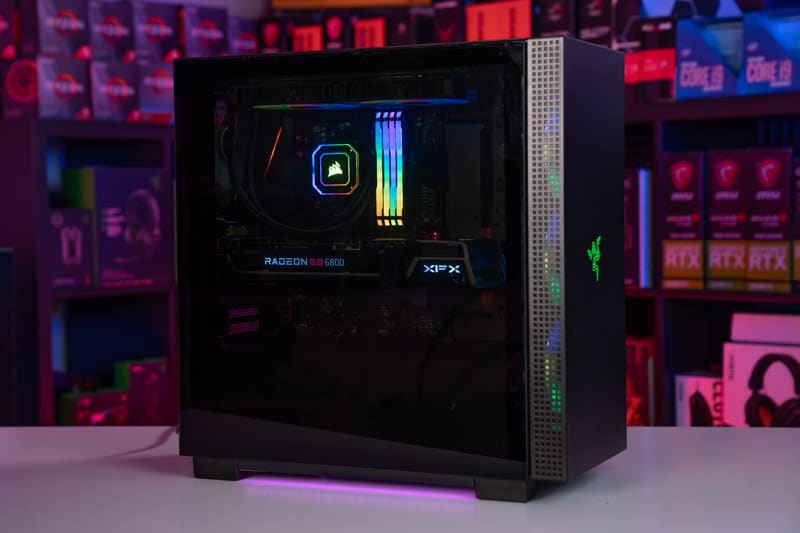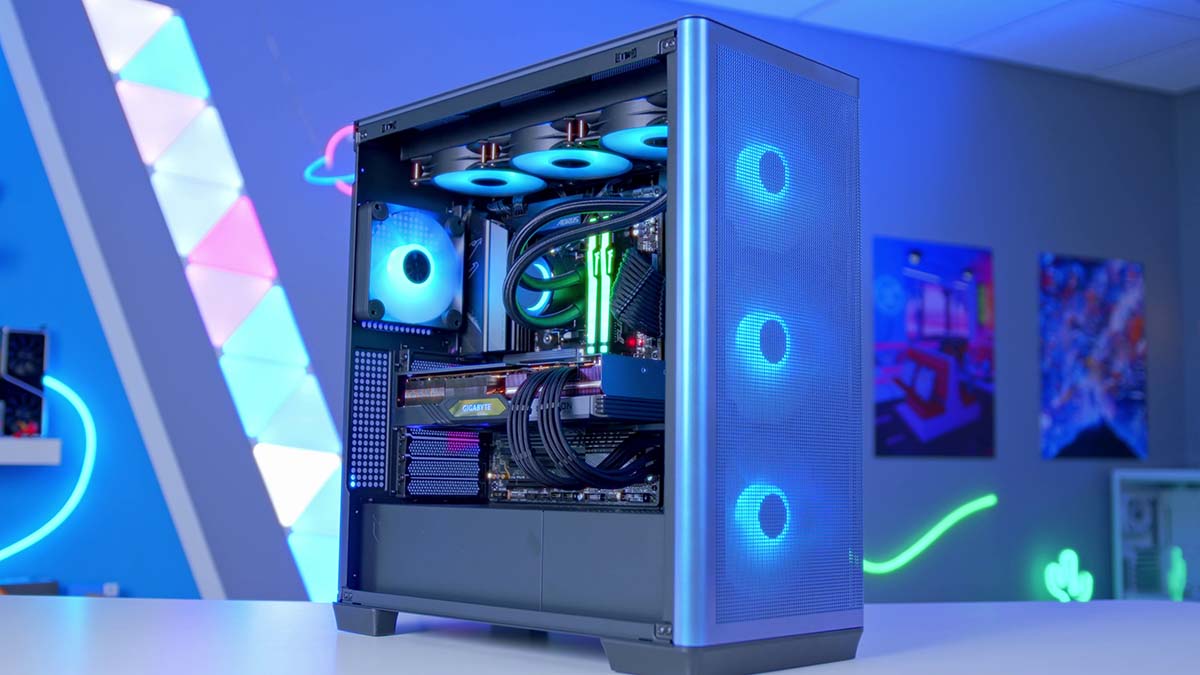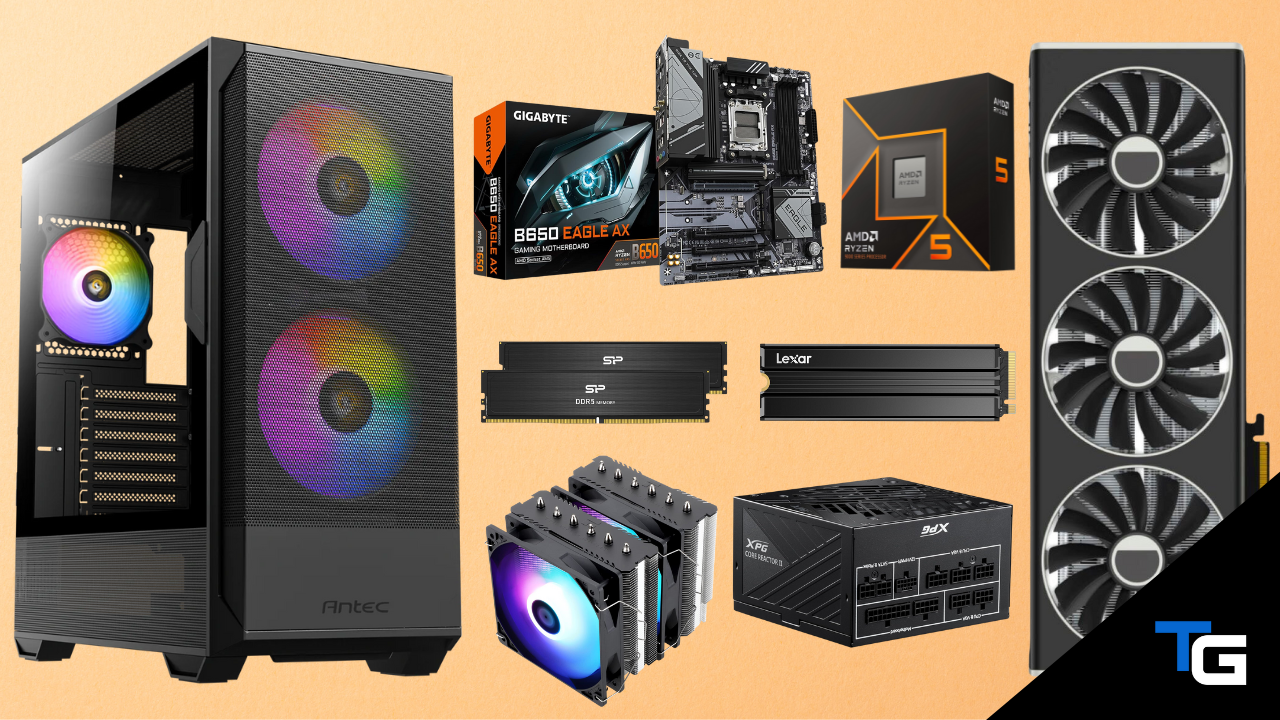Are you on the hunt for a powerful gaming PC that won’t break the bank? You’re in the right place!
With a budget of $1500, you can build a gaming powerhouse that delivers stunning graphics, lightning-fast speed, and immersive gameplay. Imagine diving into the latest games with zero lag and maximum settings, all without emptying your wallet. In this guide, we’ll walk you through the best components that strike the perfect balance between performance and value.
By the end, you’ll have a gaming rig that not only meets but exceeds your expectations. Ready to level up your gaming experience? Let’s get started on building your dream setup!

Choosing The Right Components
A powerful processor is key. AMD Ryzen 5 5600X is a great choice. It provides excellent speed and performance. Intel Core i5-11400F is also a solid option. Both fit well in a gaming PC build. Choose based on your preference and budget. These processors handle most games smoothly.
A good graphics card is essential. NVIDIA GeForce RTX 3060 is a popular pick. It offers great visuals and performance. AMD Radeon RX 6600 XT is another strong contender. Both cards are within budget and deliver stunning graphics. Decide based on brand loyalty or specific needs.
16GB of RAM is a must for gaming. It ensures smooth gameplay and multitasking. 32GB is better for future-proofing. For storage, get a 1TB SSD. It offers fast load times and ample space. If more storage is needed, add a 2TB HDD. This combo works well for most gamers.
Motherboard And Compatibility
A compatible motherboard is vital for a gaming PC. Choose a socket type that matches your CPU. Common choices are LGA 1200 for Intel and AM4 for AMD. The chipset affects performance. Pick a B550 or Z490 for balance. These options offer good speed and features.
Expansion slots let you add more features. Look for at least one PCIe x16 slot for a graphics card. M.2 slots are great for fast SSDs. USB ports matter too. More ports mean more devices. Aim for USB 3.2 for speed. Onboard Wi-Fi can be helpful. Some motherboards come with it.
Power Supply Requirements
A good power supply is important. Wattage tells us the power it gives. For a gaming PC, you need at least 500 to 750 watts. This helps run all parts smoothly. Efficiency is about saving energy. Look for 80 Plus ratings. These ratings show how much power is saved. More stars mean better efficiency. This helps your PC use less electricity.
Modular power supplies have cables you can attach. This makes the inside of the PC neat. Non-modular power supplies have fixed cables. These can make the PC look messy. Modular ones are a bit more costly. But they help in better air flow. This keeps the PC cool.

Cooling Solutions
Air coolinguses fans to keep the computer cool. Fans blow air over the parts. They are easy to install and often cheaper. Liquid coolinguses water or special liquids. These liquids move heat away from the computer parts. Liquid cooling is quiet and often better at cooling. But, it can be harder to install. It costs more money too.
Case fans help move air inside the computer. They keep parts from getting too hot. Fans can be placed in the front, back, or side. Front fansbring cool air in. Back fanspush hot air out. Side fans can help move air faster. More fans mean better cooling. Make sure fans are placed right for best cooling.
Case Selection And Aesthetics
Choosing the right case combines functionality with style for a gaming PC build under $1500. Sleek design enhances visual appeal while ensuring proper airflow and component protection. Explore options with LED lighting and customizable panels for a personalized gaming setup.
Size And Form Factor
Choose the right size for your gaming PC. A compact casesaves space. A larger case offers better airflow. Think about the form factortoo. ATX cases are standard. Micro-ATX and Mini-ITX are smaller. Smaller cases might limit future upgrades.
Design And Build Quality
Pick a case with sturdy materials. Steel and aluminum are durable. Plastic cases are lightbut less strong. Consider the design. Some cases have glass panels. They show off the inside. Others have LED lightsfor fun effects. Make sure the build quality is reliablefor lasting use.

Building Process
Start with the motherboard. Attach the processor and RAM first. Be careful with screws. Do not over-tighten. Handle all parts gently. Use an anti-static wristband. This prevents damage. Keep the cables tidy. Use zip ties. Connect the power supply last. Check each connection twice.
PC won’t start? Check the power cable first. Look at the power button connections. Still no luck? Recheck all the cables. No display on monitor? Ensure the monitor cable is tight. Graphics card could be loose. Reseat it carefully. Hearing weird noises? Fans might be blocked. Clean them with compressed air. Keep calm and check each step.
Performance Testing
Benchmark tools check how well a PC works. They test speed and strength. Popular tools are 3DMark, Cinebench, and PCMark. These tools show how fast games run. They help compare different PCs. Using them is easy. Just start and see the results. Results show numbers and graphs. Higher numbers mean better performance. These tools are important for gamers. They show if a PC is ready for new games.
Testing games shows how a PC handles them. Frame rate is key here. It shows how smooth a game plays. 60 frames per second is good. Higher is better. Check different games. Some games are easy to run. Others need more power. Settings affect performance too. High settings need a strong PC. Low settings run on weaker systems. Testing helps find the best settings. It makes games run better on any PC.
Upgrades And Future-proofing
Upgrading your gaming PC can make it faster. Newer graphics cards show better images. More RAM helps run many games smoothly. Faster processors make games load quicker. These upgrades can make your PC last longer.
Software updates keep your PC running well. New drivers fix bugs. They add new features too. Updating drivers is easy. It helps your games work better. Always check for updates. They keep your PC safe and fast.
Frequently Asked Questions
What Components Are Best For Gaming Under $1500?
For a gaming PC build under $1500, consider an AMD Ryzen 5 or Intel i5 processor. Pair it with an NVIDIA RTX 3060 or AMD RX 6700 XT graphics card. Opt for 16GB RAM, a 512GB SSD, and a reliable power supply.
These components ensure optimal performance for modern games.
Can I Play Latest Games On This Build?
Yes, a gaming PC under $1500 can handle most modern games. With a powerful GPU and sufficient RAM, you’ll enjoy smooth gameplay. Games like Cyberpunk 2077 and Fortnite will run well. Settings may need adjustments for ultra-high graphics. Overall, expect excellent performance for the price.
Is Building A Pc Cheaper Than Buying?
Building a PC is often cheaper than buying pre-built. You can select parts that suit your budget and needs. It allows for customization and upgrades. Pre-built systems may include unnecessary features, raising costs. Building ensures you pay only for performance and essentials.
How To Ensure Future-proofing With This Budget?
Future-proofing a gaming PC under $1500 requires strategic component choices. Opt for a motherboard supporting upcoming CPUs and GPUs. Choose a power supply with extra wattage. Invest in quality cooling solutions. Regularly update software and drivers for optimal performance and compatibility.
Conclusion
Building a gaming PC under $1500 is a smart choice. It offers powerful performance without breaking the bank. You enjoy smooth gameplay and stunning graphics. Carefully pick each component for the best experience. Balance is key. Make sure everything works well together.
Quality parts ensure longevity and reliability. This build lets you dive into gaming adventures confidently. Play the latest titles with ease. Your gaming setup is ready for action. Upgrade as needed in the future. Enjoy gaming without compromise. Your dream gaming PC is now a reality, all within your budget.
Read More:
- Network Automation Tools ROI: Boosting Efficiency & Savings
- Noise‑Cancelling Earbuds Battery Life: Maximize Your Usage
- Ci/Cd Pipeline Tools Comparison: Boost Your DevOps Efficiency
- Serverless Vs Containerized Workloads: A Comparative Guide
- Vr Content Creation Tools 2025: Revolutionize Your Creations
- Best Cross‑Platform Mobile Frameworks 2025: Top Picks
- Javascript Frameworks Benchmark 2025: Speed & Performance
- Quantum Cryptography Implementation Challenges: Unveiling Complexities

